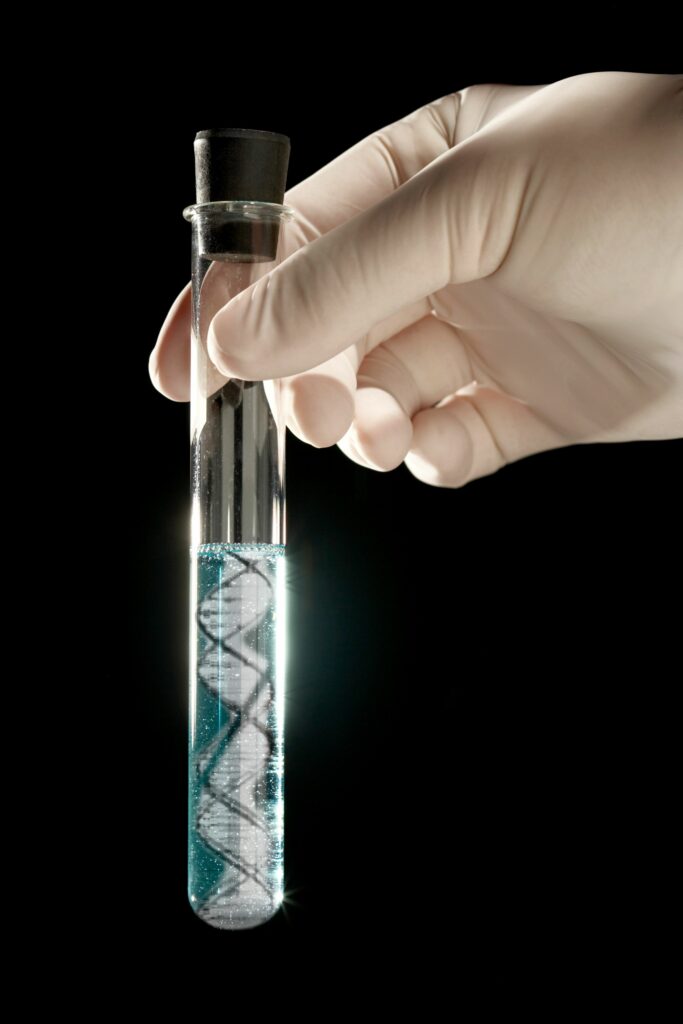DNA, or deoxyribonucleic acid, is the hereditary material in all organisms. We well know how to extract DNA, and it’s really simple. To extract DNA is a process to isolate or obtain DNA from biological samples. Let’s go further in that exciting adventure!
1- Activity 1 : Questions about DNA
To better understand what we are going to do during the extraction, we need to know a little bit more about DNA. Therefore, answer the following questions… You can use the dictionary and your computers. Work in pairs and remember that the most important thing is to know the vocabulary.
- 1. What is the largest structure inside the cell?
- 3. Why is the nucleus an important cell structure?
- 4. Are there other structures inside the cell besides the nucleus?
- 5. How many chromosomes are found within the human cell nucleus?
- 6. What is the relationship between chromosomes and DNA?
- 7. What do the initials DNA stand for?
- 8. What type of bond exists between the bases?
- 9. What is the backbone of the double helix?
- 10. What are the four letters of bases and how are they paired?
- 11. What do the base letters stand for?
- 12. What are genes?
- 13. What do proteins do?
A video to help you:
2- Activity 2 : DNA Extraction
DNA EXTRACTION FROM KIWI or BANANA From Office of Biotechnology, Iowa State University
Introduction
DNA is present in the cells of all living organisms. This procedure is designed to extract DNA from onion in sufficient quantity to be seen and spooled*. It is based on the use of household equipment and supplies.
Materials
- An half-kiwi or banana or else
- Test-tube
- Erlenmeyer
- Scalpel
- Scissors
- Filter
- Cotton bud
- Mortar & Pestle
- Knife
- Funnel*
- Extraction buffer (detergent & salt): The detergent dissolves the fatty molecules that hold the cell membranes together, which releases the DNA into the solution. The salt enables the DNA strands to come together.
- Ethanol
Procedure
- 1- Peel the kiwi or the banana, cut it into about 12 pieces and put the pieces into the mortar
- 2- Add the extraction buffer and crush well
- 3- Filter the mixture through the paper-filter over the Erlenmeyer
- 4- Filter again through the cotton bud over a test-tube (about 1/3 full)
- 5- Add cold alcohol to the test tube to create an alcohol layer on top of about 5 cm. DNA is not soluble in alcohol. When alcohol is added to the mixture, the components of the mixture, except for DNA, stay in solution while the DNA precipitates out into the alcohol layer.
- 6- Let the solution sit for 2 to 3 minutes without disturbing it. It is important not to shake the test tube. You can watch the white DNA precipitate out into the alcohol layer. When good results are obtained, there will be enough DNA to spool on to a glass rod, a pasteur pipette that has been heated at the tip to form a hook, or similar device. DNA has the apparence of white mucus.
Perspectives
The process of extracting DNA from a cell is the first step for many laboratory procedures in biotechnology. The scientist must be able to separate DNA from the unwanted substances of the cell gently enough so that the DNA is not broken up.
*Spooled: a spool is a bobbin. To spool is to make a bobbin.
*Funnel: a conically shaped utensil having a narrow tube at the small end; used to channel the flow of substances into a container with a small mouth
Results :
It is possible to continue the experiment by making sure that we are indeed in the presence of DNA in our test tube. In this case, onion root tips can be stained to reveal either nuclei or chromosomes. The dye* used is acetic carmine. By pouring acetic carmine into the test tube containing the DNA jellyfish, we see that the jellyfish takes on the same coloring as the inside of the nuclei as the chromosomes. What we have obtained in the test tube is indeed DNA.
*dye = a natural or synthetic substance used to add a color to or change specifically the color of something.
